
Summer in the Sanctuaries
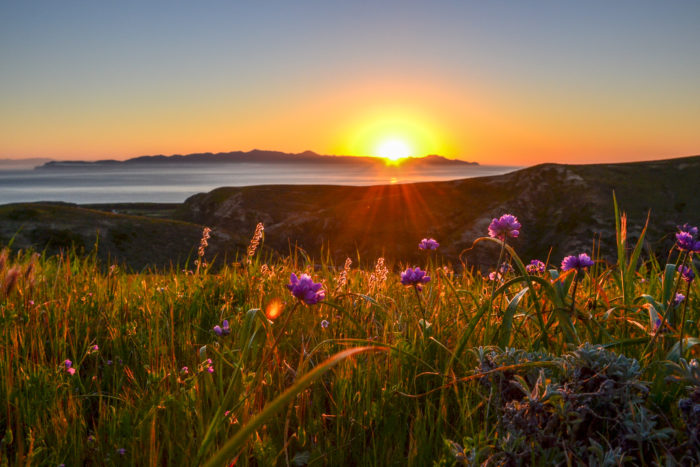
Photo Credit: Kendra Chan
Summertime in the Northern Hemisphere brings with it the longest and warmest days of the year. The season is associated with beach trips and pool days, cool treats, and time away from the hustle and bustle of daily life. Throughout the summer months, activity is quite high across the National Marine Sanctuary System due to natural events like wildlife migrations, oceanographic changes, and weather that is perfect for outdoor recreation and tourism! Here are just a few wildlife focused events that take place in the summer months:
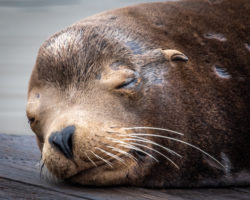
Photo Credit: Douglas Croft
California sea lions (Zalophus californianus) spend time along the West coast of the United States for pupping and breeding season, which starts in mid-May and can last through July. After an 11-12 month pregnancy, sea lion pups are born live, nurse from their mothers, and begin learning how to socialize and hunt during this critical period. During this time, adult males establish their breeding territories and do their best to attract adult females. Not only are these activities a sight to see, they can be quite noisy as well.
Grunion (Leuresthes tenuis) spawn on beaches throughout southern California, including near Channel Islands National Marine Sanctuary, between late March and early June. These fish travel ashore at night in the spring and summer months, usually in the days after the full and new moons. Spawning begins after the evening high tide and continues for about two hours, with the fish returning to the ocean shortly after. Females deposit their eggs into the sand where they are kept moist by wave action and incubate for about 10 days before hatching, emerging from the sand, and being swept out to sea. Females can lay between 1,600 and 3,600 eggs per run and can spawn as many as six times per season.
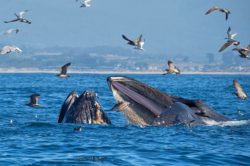
Photo Credit: Jim Capwell
Humpback whales and blue whales arrive in the waters of Cordell Bank and Greater Farallones national marine sanctuaries in early June. Ocean upwelling in the spring brings to the area vital nutrients that support krill, small schooling fish, and other species. Since whales feed seasonally and need to eat hundreds or even thousands of pounds of food each day, this is the perfect place for a summer buffet. This seasonal feeding frenzy makes sighting whales from land or by boat easy to do.
Jellyfish blooms make their way to the waters off of Northern California beginning in June, as do migratory marine birds. As upwelling winds die down in the spring, many species of jellies drift into Cordell Bank, Greater Farallones, and Monterey Bay national marine sanctuaries. When winds pick back up in November, these jelly blooms disperse. Black footed albatross and sooty shearwaters are two bird species that feed and gather in and near these sanctuaries thanks to abundant food and temperate conditions. Birds gather by the millions throughout the season, with most departing in mid-September for their annual migrations to warmer areas in Central and South America.
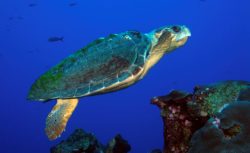
Photo Credit: Frank Burek
Loggerhead sea turtles begin to hatch from their nests along Georgia’s beaches in June. Hatching continues through October. Hundreds of juvenile turtles emerge from the sand and make their way to the ocean. Those that survive into adulthood will return to the same place from which they hatched for mating and nesting. Loggerheads use the waters of Gray’s Reef National Marine Sanctuary as a foraging and resting area.
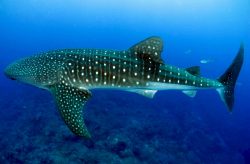
Photo credit: Flower Garden Banks National Marine Sanctuary
Coral spawning occurs in the Florida Keys and the Gulf of Mexico. In Florida Keys National Marine Sanctuary, coral spawning is a sight to be seen late at night and during the week after a full moon in either August or September. In Flower Garden Banks National Marine Sanctuary, mass coral spawning occurs in the week following a full moon in August, usually earlier in the night between 8:00 and 9:00 pm. In both areas, coral spawning involves the release of gametes into the water and creating what looks like an underwater snow storm. These gametes combine to form fertilized embryos that develop into coral polyps and can turn into the bright and beautiful coral species that build reefs.
Whale sharks – the world’s largest species of fish – pass through the waters of Flower Garden Banks National Marine Sanctuary, with the most activity occurring between late April and early September. Meanwhile, white sharks aggregate near the Farallon Islands throughout the summer and molting elephant seals gather on land-based haul out sites between May and November.
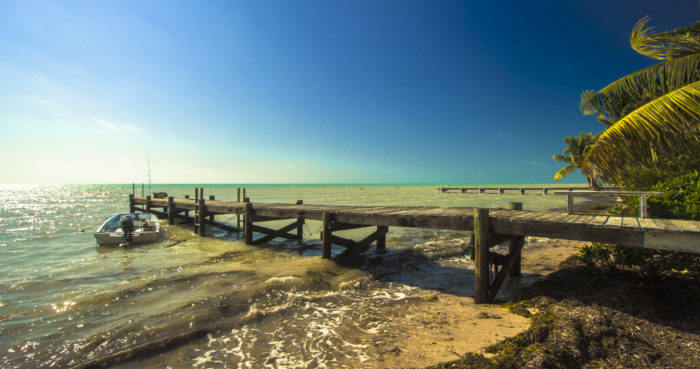
Photo credit: Florida Keys National Marine Sanctuary
